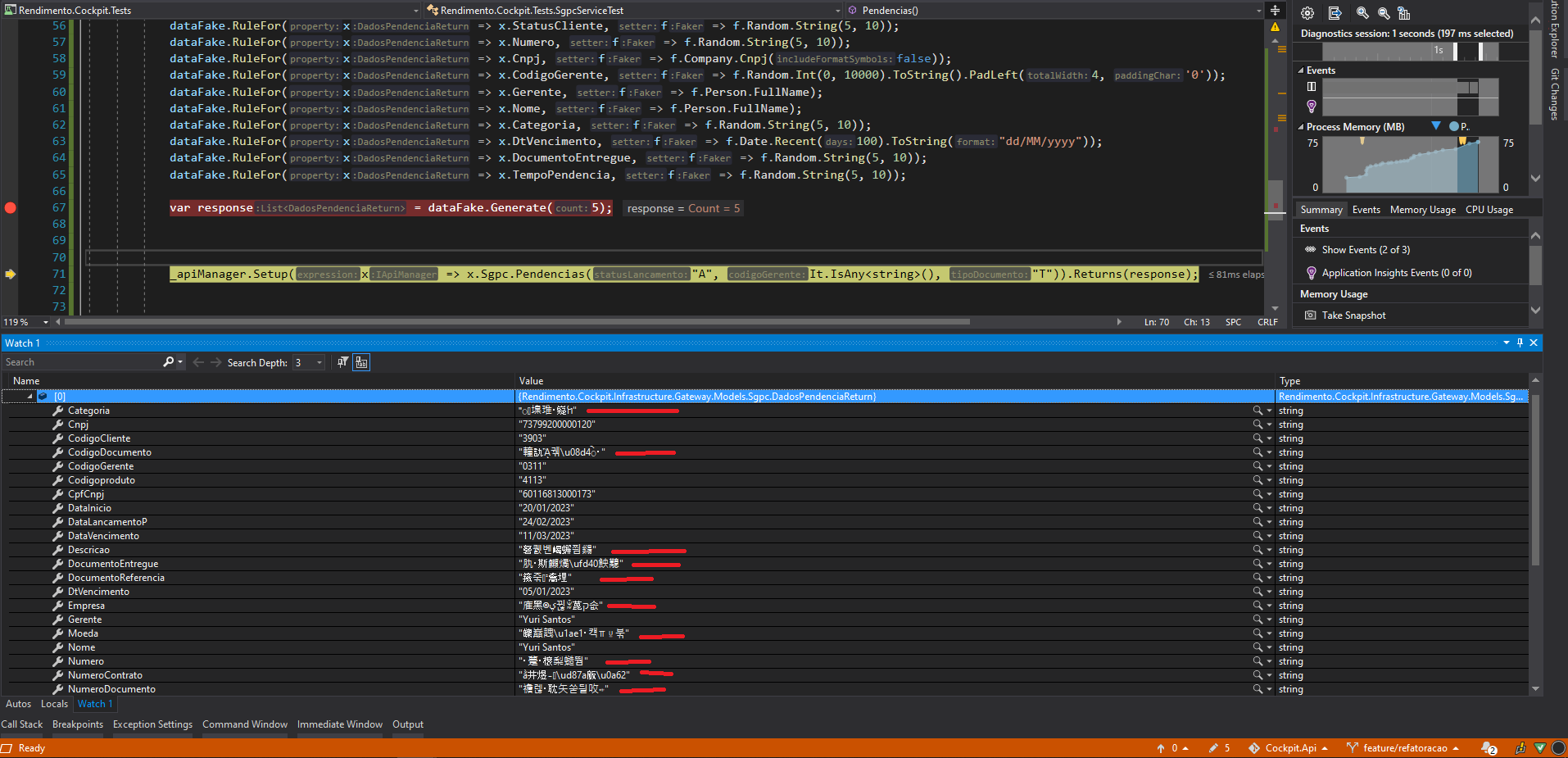Hi @raffaelmiranda ,
First,
| Software | Version(s) |
|---|---|
| Bogus NuGet Package | 34.0.3 |
At the time of this writing, Version 34.0.3 does not exist:
Second, your screenshot shows you are mostly using Random.String() not Random.String2().
To understand the difference, you'll need to read the implementation and XML documentation for String and String2 in how they differ shown below:
.String()
.String2()
Notice, that both implementations do not work with any locale. They are mostly a-z and char.MinValue - char.MaxValue methods.
Hope that helps.
Version Information
What locale are you using with Bogus?
Brazil
What's the problem?
When I use f.Random.String2(25), even if I set pt_BR in locale, it returns data that is impossible to read for another encoding or for another language. Maybe there was a missing setting in Bogus?
What possible solutions have you considered?
I considered only what is shown in the code example
Do you have sample code to show what you're trying to do?
Result:
(Please be complete. Provide all code necessary to run your example in LINQPad.) (The more complete code examples are, the more accurate answers will be.) (https://www.linqpad.net)